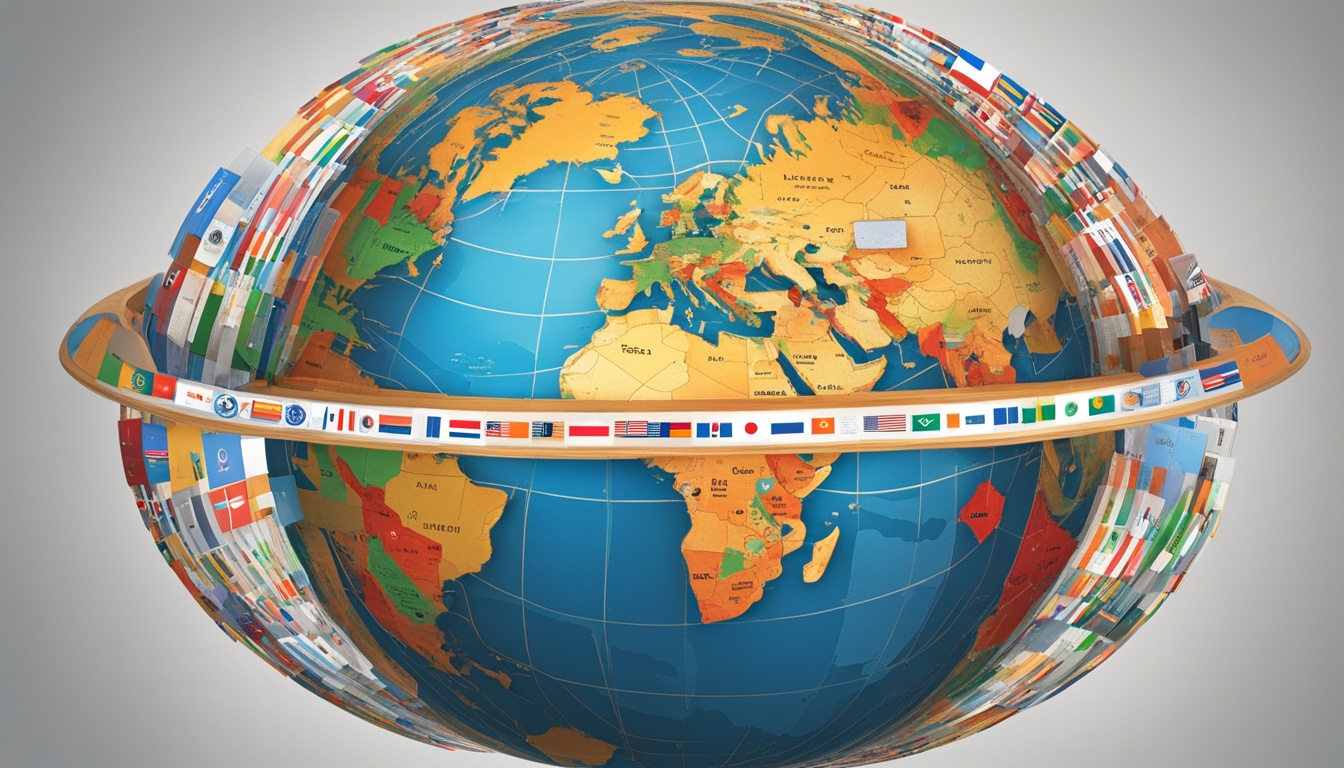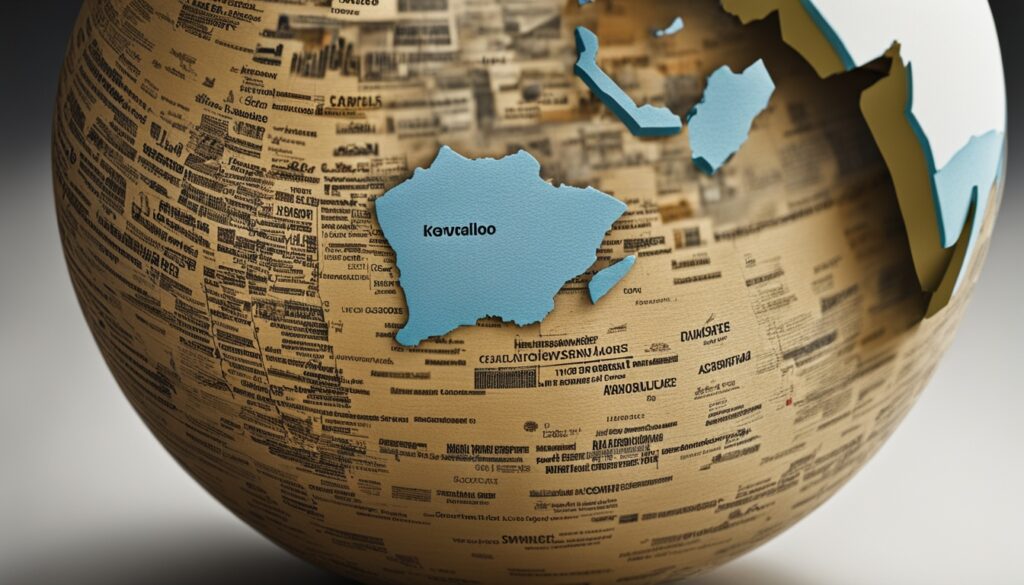
Businesses are growing in global markets, making it key to have websites in many languages. This is why multilingual SEO is crucial. It focuses on making websites accessible in different languages, not just different countries.
International SEO aims at specific countries but multilingual SEO increases audience reach by speaking in various languages. This strategy brings several benefits. Websites can surpass rivals, improve SEO, and connect with more search engines.
For a good multilingual SEO plan, businesses should start by choosing their target languages. This choice should reflect the target market and audience. It's critical to have a clear language plan from the start.
Next, getting the translations right and picking the best keywords is essential. Content must be properly translated and resonate with the audience in each language. Finding the right keywords for each language helps make the site more visible in searches.
Also, the site's structure should be adjusted to fit in the different languages. This means organizing content well. A well-organized site means a better experience for users, no matter the language they speak.
A strong multilingual SEO strategy can boost a business's visibility and attract the right audience online. Let's delve into how to put together an effective multilingual SEO plan. This will help optimize websites for global search successfully.
The Approach to Multilingual SEO
When you plan a successful multilingual SEO strategy, start by choosing your project's scope. Pick the languages to translate your content into and how to do it. You also decide if you'll translate the whole website or just some pages.
Defining the project's scope helps focus your efforts. It ensures the translated content speaks directly to your international audience. This way, your message hits home with users worldwide.
Keyword research is key in multilingual SEO. Search for the best keywords in each target language. Finding the right words will boost your content and help you rank higher on search engines.
But, there are challenges in multilingual SEO, like the risk of duplicate content. To avoid this, make sure search engines can handle and show your translated content properly without flagging it as duplication.
Using hreflang tags and following best practices helps avoid duplicate content issues. They show search engines which language a webpage is meant for, reducing the risk of penalties.
To sum up, multitasking SEO means setting your project's limits, doing in-depth keyword research, and avoiding duplicate content. These efforts help you reach more international users, boost your site's visibility, and draw more people to your page.
When we talk about multilingual SEO, focus on two main things: translation and keyword research. Both are key for making your content spot-on for different languages and people.
Translation is a big deal in multilingual SEO. It's crucial to have accurate translations. Find a trusted partner or software to keep your message clear worldwide.
Keyword research is also important. It helps figure out which words work best in different languages. Share your top keywords with the translation team. This way, you find the best words in each language to attract more visitors.
Pairing keyword research with translation can help you understand your audience better. It allows you to fine-tune your content to match their needs. This boosts your chances of showing up higher in search results when they look for something.
In short, translation and keyword research are must-haves for excellent multilingual SEO. Do proper translations and thorough keyword checks. You will see better success in global search results.
Translation and Keyword Research: A Winning Combination
For good multilingual SEO, translation and keyword research are best friends. Team up with translation experts and do solid keyword research. That's how you step up your multilingual SEO game and reach more people.
"Translation is not only about converting words from one language to another; it's about conveying the essence and meaning of your content to a global audience. Combine this with tailored keyword research, and you have a winning formula for multilingual SEO success." – International SEO Expert
Multilingual Keyword Research Tips
| Step | Action |
|---|---|
| 1 | Identify your top performing organic keywords. |
| 2 | Provide these keywords to your translation team. |
| 3 | Request translation variations of each keyword. |
| 4 | Analyze the translated keyword variations to identify the most relevant and popular keywords in each language. |
| 5 | Incorporate these keywords into your multilingual SEO strategy. |
Use these tips for better keyword research in multiple languages. This will boost your global appeal and improve your multilingual SEO. Remember, good translation and custom keyword research are crucial for success.

Conclusion
Optimizing a website in multiple languages needs attention to certain SEO details. To make a multilingual website work well, you must look at things like how the URLs are set up, how the content is translated and tweaked, and adding hreflang tags.
Deciding on a URL structure is a big choice for businesses. They can pick between using separate domains, subdirectories, subdomains, or URL parameters. The right choice here depends on who the site's visitors will be. It must make their visit smooth and easy.
Translating and adjusting the content is key to making a website in several languages thrive. It's not just about translating accurately. Tweak things like meta descriptions and other behind-the-scenes details. This helps search engines know what your site is all about.
Don’t forget to use hreflang tags. They tell search engines about your site's different language versions. This can stop issues with duplicate content and makes sure people find the right language version in search results.
With these technical SEO tips, business websites in many languages can do better online. Better visibility in search results means more global visitors and more chances to share what you offer.
FAQ
What is multilingual SEO?
Multilingual SEO is all about making a website work well in many languages. It's not just about where you're from, it's about who you're talking to. This process helps websites show up more in search results around the world. It makes the website more visible and easy to find.
How does multilingual SEO differ from international SEO?
Multilingual SEO focuses on making a website attractive to people of many languages. On the other hand, international SEO focuses on specific countries. Multilingual SEO cares more about the language you speak, while international SEO looks at your location.
What are the benefits of multilingual SEO?
Multilingual SEO offers many perks. It can help you stand out from your competitors in various languages. It boosts your overall SEO rankings and gets your website in front of more people. This way, businesses can reach a wider audience and be seen more globally.
How do I approach multilingual SEO?
To start with multilingual SEO, first figure out the languages you want to target. Then decide how you'll translate your content. You can choose to translate the whole site or just key parts. Also, look into the technical side to avoid issues and make search engines see your content correctly.
What role does translation play in multilingual SEO?
Translation is vital in multilingual SEO. Good translations make your page more appealing to an international audience. It's crucial to work with skilled translators or use quality translation software. This ensures your content ranks well in searches no matter the language.
How important is keyword research in multilingual SEO?
Doing keyword research is very important for every language on your site. Provide your translators with successful keywords for each language. They’ll find translations for these keywords. This approach helps you use the best words to attract visitors from around the world.
What technical aspects should I consider for multilingual website optimization?
When tweaking a multilingual website for SEO, think about the technical side. Choose the best URL setup and make sure your pages are translated and optimized well. Don't forget to use hreflang tags. These tags tell search engines about your multilingual content. It helps avoid problems with duplicate content and makes your site rank better.











